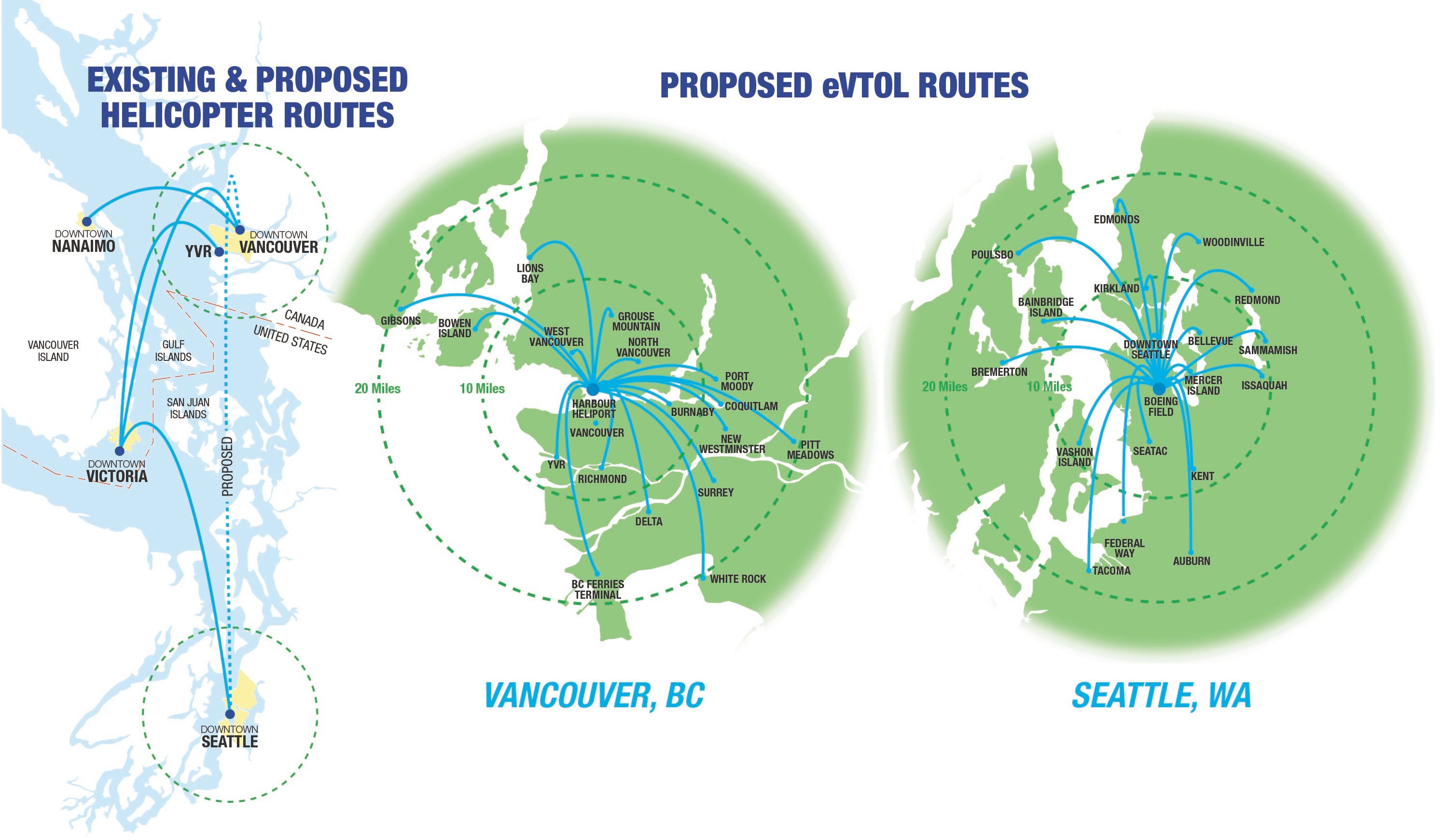Click Here to View This Page on Production Frontend
Click Here to Export Node Content
Click Here to View Printer-Friendly Version (Raw Backend)
Note: front-end display has links to styled print versions.
Content Node ID: 418869
A new case study on the potential for advanced air mobility (AAM) modes in the Canadian city of Vancouver shows a $2.1 billion contribution to the economy of the greater metropolitan area, not including the $2 billion value for the AAM business itself. Presented this week during the Vertical Flight Society’s Electrical VTOL Symposium by Michael Dyment, managing partner of U.S.-based consultancy Nexa Advisors, the study also projects a high level of return for investors in a market that already accounts for some $150 million a year in revenues for helicopter and seaplane operators into and around the Pacific coast city.
Characterizing Vancouver as a “water city,” Dyment stressed the importance to commerce of the 54 heliports in the area as well as the proximity of high-voltage power lines to facilities that require charging stations. The study analyzed six cases for advanced air mobility operations ranging from on-demand air taxi to medical transport as well as five drone applications.
“Our overall conclusion about Vancouver is that the sector value from a business case standpoint is in the billions of dollars,” said Dyment. “And the ratio that we use to talk about private financing, the so-called R over I ratio, is about 3.3. That basically means that revenue produced through these operator markets is about 3.3 times greater than the cost of building out the infrastructure and acquiring the vehicles. So that's a good ratio with which to settle on whether Vancouver can be self-sustaining. Anything above two is very good.”
Given concerns over elements such as noise, safety, security, and privacy, Dyment stressed the importance of convincing city government of the net benefit of AAM with a strong economic argument. Permanent job creation would number “in the thousands” as a primary benefit, he noted; “catalytic” or “fourth-dimension” benefits would include the opening of new modes of transport and trade between Vancouver and Seattle.
“The Canadian-U.S. border can be breached, if you like, by moving traffic up into the sky,” said Dyment. “When you go to a vertiport to catch a flight between, let’s say, central Vancouver directly to Kent, Washington…that’s a 20 to 25-minute flight versus driving, which is perhaps about a three-hour, three-and-a-half-hour experience moving forward.”
AAM would also bring big benefits to indigenous communities and a boost to university STEM research, “which is a huge factor,” he added. Finally, plans in the province of British Columbia to generate hydrogen with excess hydroelectric power and deliver it to places such as southern California present another promising opportunity, said Dyment.
